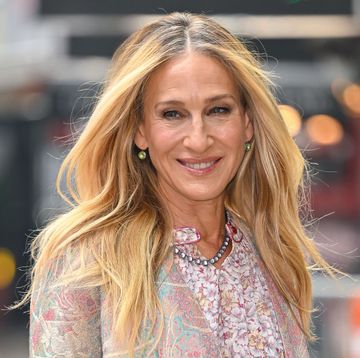If you have a brown-haired beau, you'd think his beard would be the same color. But for some men, the scruff on their chins doesn't match up with the hair on their heads. If you were shocked to discover that your man was secretly part-ginger when he grew out his goatee, we have good news: There's a scientific explanation for this strange follicular phenomenon.
Hair color, which is determined genetically, is not just inherited from our parents. People also inherit those genes from grandparents and even earlier ancestors. As a result, a person's body can express a wide range of hair color combinations.
"The genes that determine hair color are so-called 'incomplete dominant hereditary traits.' This means that there isn't one single gene that's dominant over the rest, but all genes influence each other," Petra Haak-Bloem, a specialist at the Dutch national genetic research center Erfocentrum, told Motherboard.
Red hair is caused by a mutation in what's known as the MC1R gene, Petra explained. If someone inherits two mutated versions of this gene, they end up as a typical redhead with fair skin. But having just one mutated version of MC1R causes red hair to appear on only some parts of the body, when hair might be brown or blonde elsewhere. Even if your husband's entire family has brown hair, another gene for red hair could still be part of his genetic code—and therefore show up in unexpected places.
So if your guy has a red beard, it's perfectly normal—it just means someone in his family was a redhead at some point. And it also means there's a chance your blonde-haired son could grow a red beard someday too.
(h/t Motherboard)













